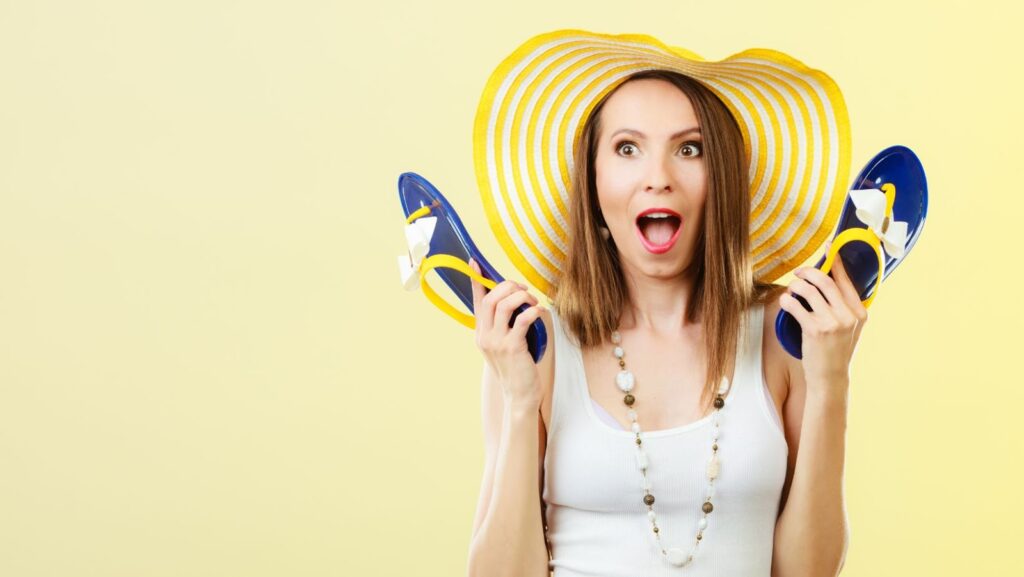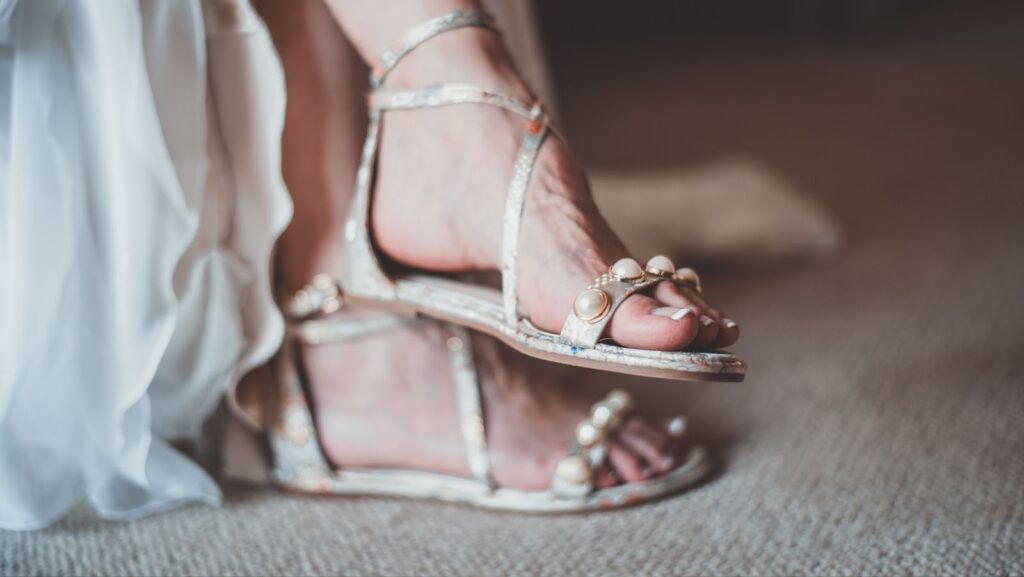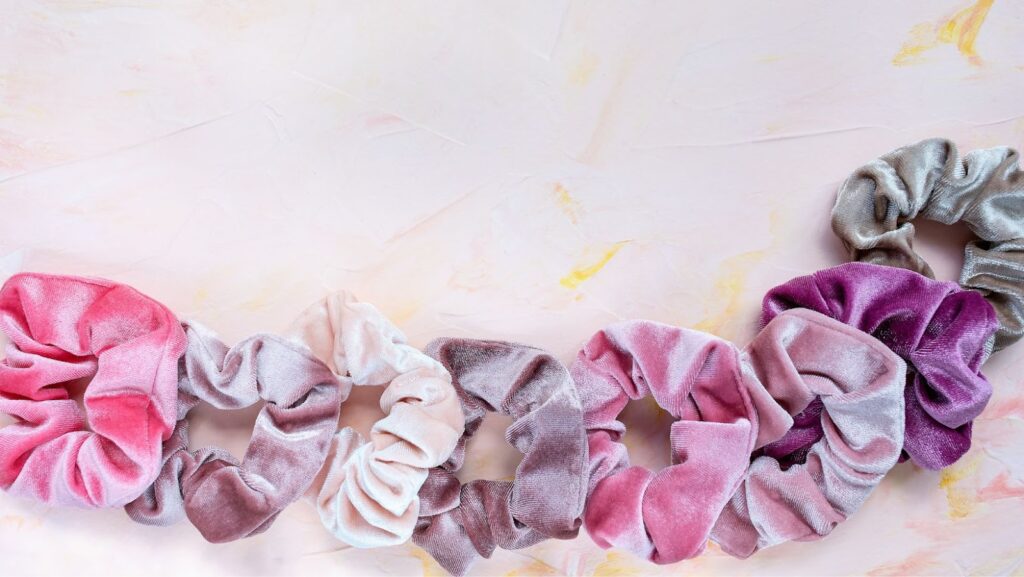Overview of Flip Flops
Flip flops are a staple of casual footwear. These simple, yet versatile shoes offer an open-toe design with a thong or strap that fits between the toes, providing minimal support. They are light in weight and convenient to wear, making them suitable for casual outings, beaches and poolside lounging.
When it comes to fitting flip flops, finding the right size is crucial. The footbed should fully support your feet and give enough space for flexibility. Consider choosing flip flops with adjustable straps that can be tightened or loosened depending on your preferences. Proper fit also depends on the shape of your foot; some people have narrow feet while others come with wide ones. It’s best to try out different brands and styles to find the perfect fit.
Another important thing to consider when choosing flip flops is their durability and quality. Some brands may be cheaper but tend to wear out quickly while others are more expensive but made from high-quality materials that can last longer than a season.
Did you know that the oldest known flip-flops were discovered in Fort Rock Cave in Oregon? They date back over 9,000 years!
Put on your flip flops and make sure they’re a snug fit, or else you’ll be flippin’ and floppin’ all over town!
How should flip flops fit
To ensure that your flip flops fit comfortably and properly, you’ll want to follow some guidelines. In order to achieve this, this section on “How Flip Flops Should Fit” with sub-sections like “Correct Sizing for Flip Flops, Toe Placement in Flip Flops, Arch Support in Flip Flops, Width of Flip Flops” will help you to select the ideal flip flops that suit your feet without any discomfort.
Correct Sizing for Flip Flops
Ensuring the right fit for your flip flops is crucial to comfort and avoiding potential injuries. Here are three important points to keep in mind:
- Choose a size that fits your foot snugly without being too tight.
- Make sure the arch support aligns with your feet and isn’t too high or low.
- The length of your flip flop should extend no more than half an inch beyond your toes
Additional factors to consider include material, width, and shape. It’s essential to select flip flops that are made from high-quality materials and provide the necessary support for your feet.
Choosing properly fitting flip flops can prevent you from experiencing common issues such as chafing, blisters, plantar fasciitis, and stress fractures. It also ensures you’re not sliding around in them which could lead to falls or strains.
True Story:
A friend of mine once wore flip flops that were too big for her feet during a day spent walking around a festival. She ended up with painful blisters on both feet and had difficulty walking for days afterward. Since then, she has always made sure to choose flip flops that fit correctly so she can enjoy outdoor activities without discomfort or injury.
Make sure your toes aren’t hanging on for dear life like they’re auditioning for Cirque du Soleil when wearing flip flops.
Toe Placement in Flip Flops
The alignment of toes in flip flops is crucial for comfort and preventing injuries. Proper toe alignment can be achieved by wearing flip flops that have a contoured footbed, allowing the toes to grip slightly. Avoid flat or flimsy flip flops that force the toes to clench and curl, leading to foot pain and injury.
In addition to proper toe alignment, it’s important to choose flip flops that fit snugly but not too tightly. If the straps are too loose, the foot will slide around, causing blisters and rubbing. On the other hand, if they are too tight, they can cut into the skin and cause discomfort.
It’s worth noting that not all flip flop brands fit the same way; some may run wider or narrower than others. It’s essential to try on different sizes and styles before purchasing a pair.
True History: Flip flops were worn as early as 1500 BC in ancient Egypt and then later gained popularity in Japan during the 20th century. The word “flip flop” was coined in America in the 1960s due to their distinctive sound when walking.
Arch Support in Flip Flops
Proper arch support in flip flops is paramount to maintaining foot health. Here are 6 points to keep in mind for proper arch support:
- Look for flip flops with built-in arch support
- Avoid completely flat flip flops
- Check that the arch support matches your foot shape
- Ensure the flip flop fits snuggly to avoid slipping and reduce stress on the foot
- Consider custom-made orthotics for individualized support
- Rotate between different pairs of shoes to prevent overuse and strain on the feet.
Additionally, it’s essential to note that improper arch support can lead to various foot problems like plantar fasciitis and heel pain.
Did you know that a recent study published in the Journal of Foot and Ankle Research found that flip flops with arch support can significantly reduce pressure on the forefoot?
Finding the right width of flip flops is like finding the perfect partner, too narrow and you’re uncomfortable, too wide and you’re just flopping around.
Width of Flip Flops
When it comes to the proper fit of your flip flops, ensuring the right width is just as important as length. The ideal width varies for each individual, so finding a comfortable pair may require some trial and error.
To help guide you in finding the perfect fit, we’ve created a table outlining common width options for both men and women’s flip flops. The table features columns indicating narrow, regular, wide and extra-wide options, with corresponding measurements for each. This can aid in identifying which size to try first when shopping for new flip flops.
It’s worth noting that even within the same brand or style, there may be variation in sizing and width. Always try on multiple sizes if possible to ensure the best fit.
In terms of selecting a comfortable width option, keep in mind that a snug fit is preferable over one that is too loose or tight. A properly fitting flip flop should have ample room for your feet to breathe while still providing adequate support.
Interestingly, researchers have found strong evidence suggesting that narrow-width footwear increases the risk of foot deformities such as bunions and hammertoes. This highlights the importance of choosing a correctly sized and fitting pair of flip flops to ensure long-term foot health.
Understanding how to select properly fitting flip flops can prevent discomfort and potential foot problems down the road. Using our simple table as a starting point can help guide you towards making an informed decision when shopping for this popular summer footwear staple.
Choosing the wrong flip flops can lead to a major fashion faux-pas or worse, a painful blister disaster.
Factors to Consider When Selecting Flip Flops
To make sure you select the right flip flops, you must consider several factors. When it comes to selecting flip flops, the occasion and purpose, materials used, and the brand and quality are important aspects to remember. In this section titled “Factors to Consider When Selecting Flip Flops” with sub-sections of “Occasion and Purpose”, “Materials Used in Flip Flops”, and “Brand and Quality of Flip Flops”, you will learn the solution briefly.
Occasion and Purpose
When selecting flip flops, it’s important to consider the context in which they will be worn and the specific purpose they will serve. Whether for everyday use or a special occasion, your flip flops should cater to your needs.
For casual day-to-day wear, choose flip flops with comfortable footbeds and durable materials that can withstand regular use. If you’re looking for something more stylish for a specific event, opt for flip flops with intricate designs or embellishments that complement your outfit.
If you plan on wearing your flip flops for outdoor activities like hiking or water sports, look for pairs with non-slip soles and quick-drying materials. For those with foot issues or concerns, consider orthopedic flip flops that offer additional support and cushioning.
Ultimately, the occasion and purpose of the flip flops will guide your selection. Don’t miss out on finding the perfect pair that caters to your needs! If you’re looking for a flip flop that’ll last longer than a goldfish in a kid’s room, make sure it’s made with durable materials.
Materials Used in Flip Flops
Flip flops are popular footwear that people use for different occasions. They are versatile, lightweight and perfect for warm weather. However, the materials used in their making also play a crucial role in determining their quality and comfort. In this guide, we will cover some of the critical materials used in flip flops.
- Rubber – Flip flops can be made from natural or synthetic rubber. Natural rubber is soft, durable and flexible while synthetic rubber is water-resistant and less expensive.
- Leather – Some flip flops feature leather straps and footbeds that offer comfort, durability and style. Leather flips flops are also suitable for dressier occasions.
- EVA – Ethylene Vinyl Acetate (EVA) foam is lightweight, shock-absorbent and water-resistant. It’s commonly used in the midsole to provide cushioning.
- Webbing – A webbing upper strap can be made from polyester, nylon or polypropylene. They are easy to clean, durable and perfect for outdoor activities like hiking or beach walking.
Other considerations when selecting flip flop materials include breathability, grip soles, arch support or heel cups, toe posts comfort level.
Flip flops have a rich history dating back to ancient Egypt where they were worn as sandals made from papyrus leaves. The modern-day flip flop was introduced in Japan after World War II by returning soldiers who brought back Zori sandals with them from Okinawa. Today there are countless designs available to suit every individual’s preferences and styles.
Brand and Quality of Flip Flops
When selecting flip flops, evaluating the brand and quality of materials is essential. Investigate these factors to determine which flip flops offer comfort, durability, and longevity.
- Look for a trusted brand that has a reputation for excellence
- Inspect the thickness, density, and flexibility of the sole material
- Choose an upper material that’s breathable, comfortable against the skin, and won’t fray easily
- Purchase flip flops that fit your exact foot size without being too tight or loose
- Determine if the flip flop has features such as arch support or shock absorption
- Assess how easily water drains out from the footbed when wet
In addition to considering these factors, examine online reviews and ask friends for recommendations before making a purchase.
It’s also worth noting that higher-priced flip flops are not always synonymous with better quality. Instead of shopping by price point alone, base your decision on the aforementioned factors to make an informed choice. By selecting high-quality flip-flops made from durable materials, you can look forward to wearing them season after season without compromising on comfort.
Walking around with flip flops that don’t fit is like trying to walk on hot coals, except with less heat and more embarrassment.
Tips for Trying on Flip Flops
To ensure you get the perfect pair of flip flops that fit well and are comfortable, follow our Tips for Trying on Flip Flops with Testing the Fit of Flip Flops and Walk in Flip Flops before Purchasing as solution. These sub-sections will guide you on how to test the fit of flip flops and check if they are comfortable enough for you to walk in them for extended periods.
Testing the Fit of Flip Flops
Looking for the perfect fit of flip-flops is important and can provide comfort while wearing them. There are a few things to consider when testing their fit:
- Check whether your foot is hanging over the edge, or if there is any space between your toes and the tip.
- Check if the straps are appropriately placed on your feet, not too tight or too loose.
Lasty, test if there’s enough cushion to support your arch and heel.
Apart from these factors, it’s crucial to keep a lookout for other details as well. Ensure that the flip flops have enough grip underneath so you don’t slip while walking around in them.
A survey by The American Podiatric Medical Association found that 78% of Americans experienced foot pain due to flip-flop wear; therefore, make sure they are comfortable before making a purchase decision.
Try before you buy: walking in flip flops is like a test drive, except your feet are the car and your pride is the insurance deductible.
Walk in Flip Flops before Purchasing
Before purchasing flip flops, it’s imperative to wear them and take a few steps. Walking in Flip Flops before Buying is vital to avoid unwanted pain and discomfort later on.
To ensure you choose the right pair, follow these 4 Steps:
- Slide your foot into the flip flop, maintaining an upright position.
- Carefully step down with your heel – make sure the shoe fits well and doesn’t slide around your foot.
- Shift all of your body weight to that foot as you ‘walk roll’ from heel to toe, checking for comfort and flexibility.
- Repeat steps 2-3 for your other foot and choose the pair that feels most secure and comfortable for both feet.
Additionally, make sure to inspect each flip flop carefully, examining its materials and cushioning. With this approach, you can evaluate if the brand or size fits better.
Pro tip: Purchasing larger sizes might provide comfort but do not compromise on fitting too much because it can cause accidents.
Go forth and flip-flop freely, just don’t blame me if you end up with a case of Athlete’s Foot.
Finding the perfect fit for your beloved flip flops can be quite a task. It is essential to choose flip flops that fit properly to avoid discomfort and injury. It’s best to consider various factors such as material, arch support, and proper sizing.
It’s also crucial to try on your flip flops when your feet are warmed up from walking or exercising. This will help ensure that you achieve the perfect fit.
In addition, it’s important to note that some flip flops require a breaking-in period, so be patient with them. Breaking in your footbeds may take some time at first but once you’ve broken in your shoes, they’ll start feeling comfortable.
Wearing poorly fitted shoes can cause long-lasting effects on your feet, knees, and back. So make sure you choose the right size and provide much-needed support.
A friend of mine once wore ill-fitting flip flops during our beach trip, which resulted in painful blisters on her feet all week. She learned the hard way that choosing a perfect pair of flips is incredibly important for overall foot health and comfort.



